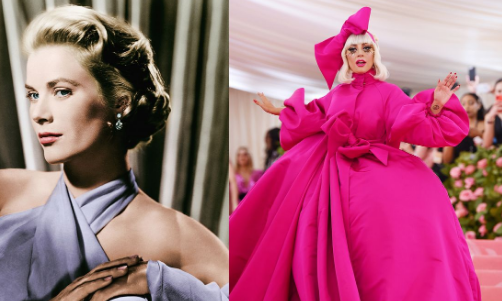
Why Style Icons Still Influence What We Wear Today
The concept of a “style icon” is deeply ingrained in fashion culture, with the power to dictate trends and influence the sartorial choices of the masses. Even today, decades after some of the most celebrated style icons first captured the public’s imagination, their impact on fashion remains as potent as ever. This enduring effect underscores the relationship between iconic figures and the fashion industry at large, illustrating how personal style can transcend time and continually inspire contemporary designs.
The Timeless Appeal of Style Icons
Style icons typically possess an inimitable sense of fashion that resonates with a wide audience. Their wardrobe choices are often seen as an extension of their personality, offering insights into their philosophy and outlook on life. The persistence of their influence is largely due to the unique and authentic personal brand they’ve cultivated, which continues to captivate and enamour fashion enthusiasts worldwide.
Fashion icons of the past like Audrey Hepburn, James Dean, and Coco Chanel established a legacy of classic styles that have a perennial appeal. Whether it’s Hepburn’s little black dress or Chanel’s tweed jacket, their distinctive looks have secured a spot in fashion’s collective conscious. Their influence has reached far beyond their heyday, becoming benchmarks for elegance and effortlessly cool style that designers and trendsetters still reference today.
The Role of Modern Designers in Upholding Legacy
Contemporary designers often pay homage to style icons by incorporating elements of their aesthetic into current collections. Through this process, designers breathe new life into timeless styles, ensuring that the legacy of these icons remains relevant. This is evident in collections that feature classic silhouettes, revealing the profound impact that historical fashion figures have on today’s designers.
A perfect example of this synergy between past and present is the work of Dries Van Noten. Known for his eclectic design philosophy and sophisticated approach to fashion, Van Noten effortlessly blends historical references with modernity. Fashion enthusiasts looking to Discover Dries Van Noten can expect to encounter contemporary pieces that reflect the enduring influence of historical style icons.
Influence of Style Icons on Modern Fashion Choices
Today’s consumers have a wealth of resources at their fingertips when making fashion decisions. Despite this, the allure of icons remains a powerful guide for many. Their time-tested style serves as a reliable reference point for those looking to cultivate their own distinctive look. In an era where fashion trends can fluctuate with rapidity, the classic style of icons provides an anchoring sense of continuity.
Such is the strength of their impact that the wardrobes of many are still shaped by the quintessential styles these figures introduced. From the simplest accessory to the overarching silhouette, echoes of icon-inspired design are ever-present in mainstream fashion, luxury ensembles, and even streetwear.
Through the devotion to these icons, fashion lovers implicitly trust the aesthetic judgments of these individuals, allowing them to influence wardrobe choices from season to season.
The Resurgence of Archival Designs
Many luxury fashion houses have delved deep into their archives to reissue pieces that were first popularised by style icons of the past. This resurgence not only celebrates the fashion house’s heritage but also underlines the perennial appeal of the icon’s look. Archival designs find a new audience in the modern era, fostering a sense of nostalgia while also meeting a craving for authenticity and timeless elegance.
Moreover, the internet and social media platforms have played a significant role in amplifying the influence of these icons. Imagery and anecdotes from their most iconic moments can be shared in an instant, allowing a new generation to draw inspiration from their enormous repository of style.
The Role of Visual Culture in Fashion
Visual culture plays a pivotal role in the reverence of style icons. Whether it’s through film, photography, or art, these mediums have immortalised the distinctive style of icons, making it accessible to the public. They offer vivid depictions of the mood and attitude each style icon embodied, enabling those images to be ingrained in the public memory.
In this visual culture, the icon’s style becomes emblematic of certain values or eras, further reinforcing its relevance. Designers and brands can tap into this cultural memory, using it as a foundation to build upon and innovate within their works.
The Continuing Conversation Between Fashion and Its Icons
There’s an ongoing dialogue between the ever-evolving fashion landscape and the classic icons that helped shape it. This conversation is hardly one-sided; while designers draw inspiration from the past, they also contribute to the contemporary interpretation of that very legacy.
For instance, when present-day style enthusiasts Discover Dries Van Noten, they are experiencing a collection that speaks to the history of style as much as to current trends. It’s this dynamic and reciprocal relationship that ensures the timelessness of style icons and their persistent effect on our wardrobes.
In conclusion, style icons continue to influence what we wear today because they represent more than just a look; they are the embodiment of attitudes, lifestyles, and philosophies that resonate across time. Their styles, celebrated and revived by contemporaries such as Dries Van Noten, have become part of a nuanced dialogue between the past and the present. Whether it is through exploring archival collections or embracing modern reinterpretations, the eclectic impact of these timeless figures profoundly shapes the realm of fashion and individual expression.




